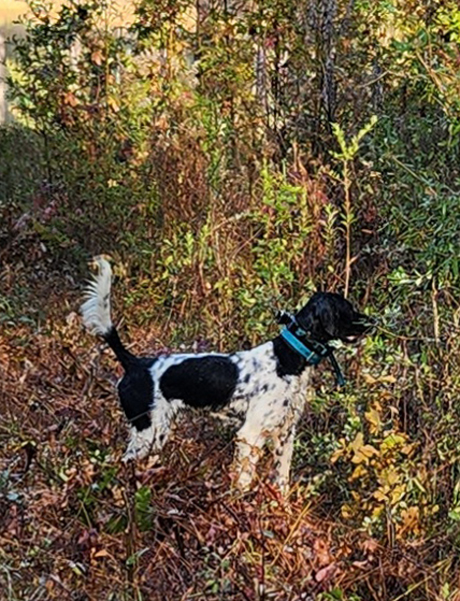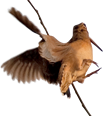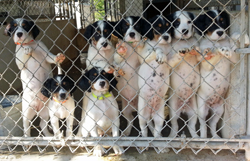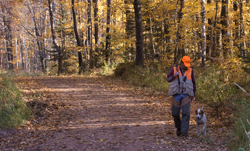When to steady a bird dog

Eleven-month-old Northwoods Snow Swept (CH Northwoods Sir Gordon x Northwoods Valencia, 2023) is ready for steadiness training because she stays on point until Jerry flushes.
Steadiness in a bird dog means the dog stays where it points until either a shot is fired, or, after the shot is fired and the dog is released by the handler. The former is called steady to wing and the latter is steady to shot.
Since either type of steadiness isn’t a natural behavior, dogs need to be trained to be steady. Done well, steadiness training is the epitome of bird dog polish. Done poorly, it can create problems around game ranging from over-cautiousness to blinking birds.
But before all that, you need to know when to start steadiness training.
Steadiness training, started too soon, gets in the dog’s head and distracts it from focusing on how to properly point birds. Started too late, the dog can develop habits that make training difficult. The best time to steady a dog is when it will point and stay on point until you flush the bird. However, there are nuances involved and it’s crucial to understand the dog’s genetics and experience.
The important genetic component is the pointing instinct. That instinct varies on a continuum from wanting to point everything to not wanting to point at all.
These dogs are cautious by nature
and are prone to pointing where the birds were
and not where they actually are.
Young dogs with lots of instinct will point the first bird scent they encounter and let the handler flush. But those points are motivated by instinct alone. The dogs have no idea what they’re doing, are unsure of what to do next and so they stay on point.
These dogs are cautious by nature and are prone to pointing where the birds were and not where they actually are. They need to learn to use their their intellect and experience to determine when to point. They have to develop boldness to jump in and see if the bird is really there. To encourage the dogs to figure that out, don’t flush in front of them. Instead, wait until they either move on or move in. You should only begin to flush in front of the dogs when you’re pretty sure the dogs have a bird pointed.
These dogs are usually bold towards birds
and have no qualms about rushing in towards scent
and flushing the bird.
For young dogs that have little pointing instinct, the development is different. These dogs are usually bold towards birds and have no qualms about rushing in towards scent and flushing the bird. They need to be exposed to birds until they learn they can’t catch them. They’ll use their intellect and experience to eventually slow down, stalk and point which then allows you to flush the bird.
Once either type of dog points only when birds are present and allows you to flush the birds, steadiness training can begin. However, there is an additional behavior to look for—reduced desire to chase the bird. After finding and pointing enough birds, most young dogs begin to show more interest in the scent of birds rather than the sight of them and so chase less.
The pointing instinct of most young dogs lies somewhere between these two extremes. Determine where your dog is before you begin steadiness training. For all dogs, it will take not only ample bird exposure but also time for them to mature. Most young dogs will be well into their second season before they’re ready for steadiness training.
Enjoy the process!




